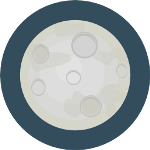Facts About Charon The Frozen Companion Of Pluto
The Largest Of Pluto’s Moons
Discovered in 1978, Charon is the largest of the dwarf planet’s 5 known moons and with a diameter half that of Pluto, it’s an unusually big satellite! As a result, the centre of the Pluto-Charon system is outside of the main body leading to some to describe the system as a double dwarf planet system!
Fast Summary Facts About The Moon Charon!
- Discovered: June 22nd, 1978 by James Christy
- Name: Named after the ferryman of the dead in Greek mythology
- Size: Diameter of 1,212 km (753 miles)
- Moon Rank: 12th Largest in the Solar System
- Surface Gravity: Only 0.03g (about 3% of Earth’s gravity!)
- Orbit Radius: 17,540 km to Barycenter (19,570 km (12,160 miles) from Pluto)
- Orbital Period: 6 days, 9.2 hours
- Orbital Speed: 0.2 km/sec
- Rotation: Synchronous (the same side always faces Pluto – known as tidally locked)
- Density: 1.71 g/cm3
- Surface: Water-ice
- Surface Temperature: -220 °C (53K)
More Interesting Fun Facts About Pluto’s Companion Moon!
- Charon was discovered over 48 years after Pluto when astronomer James Christy noticed that images of Pluto were elongated over a period of 6.39 days which represented Charon’s orbital period!
- Pluto has 5 known moons, Charon is by far the largest containing 99.99% of the mass of Pluto’s moons.
- Charon is half the diameter of Pluto, but only contains 12% of the mass, large enough though for both bodies to orbit a common point called a ‘barycenter’ which lies 960 km above the surface of Pluto – technically known as a binary system.
- At a diameter of 1,212 km, Charon is bigger than the dwarf planet Ceres.
- Both Pluto and Charon are tidally locked to one another, meaning that the same sides always face each other (both remain in the same place in their skies).
- Unlike most of the solar system's planets and moons, the Pluto-Charon system orbits the Sun tipped on its edge – similar to Uranus!
- It is believed that Charon has a differentiated interior with a rocky core and ice-water dominated mantle.
- Charon displays evidence of past geological processes, as the northern hemisphere is more heavily cratered and considerably more rugged, suggesting an enormous resurfacing of the southern hemisphere which erased earlier craters and created the plains informally known as Vulcan Planum.
- Charon has a collection of extensive grabens (or canyons) such Serenity Chasma which is part of a vast equatorial belt of chasms that is one of the longest seen in the solar system, at least 1,800 kilometres (1,100 miles) long and 7.5 kms (4.5 miles) deep. That’s about 5 times the size of Earth's 'Grand Canyon'!
- Charon’s surface is predominately made up of the relatively more stable volatile water-ice. This markedly differs from Pluto’s surface, which is composed of the volatile ices - nitrogen, methane, and carbon dioxide.
- The North Pole region of Charon is covered by a large dark area known as "Mordor" (from the Lord of the Rings). It is believed the dark area is formed by the condensation of volatile gases that escaped from Pluto's atmosphere.
- It is thought that Charon may have formed from a collision between two similar bodies at some point in the early solar system.
- Since its discovery, Charon has been imaged by the Hubble Space Telescope and other ground-based observatories. However, with the flyby of the New Horizons spacecraft in July 2015 (the first and only probe to visit the Pluto system) close up images of Charon were possible.
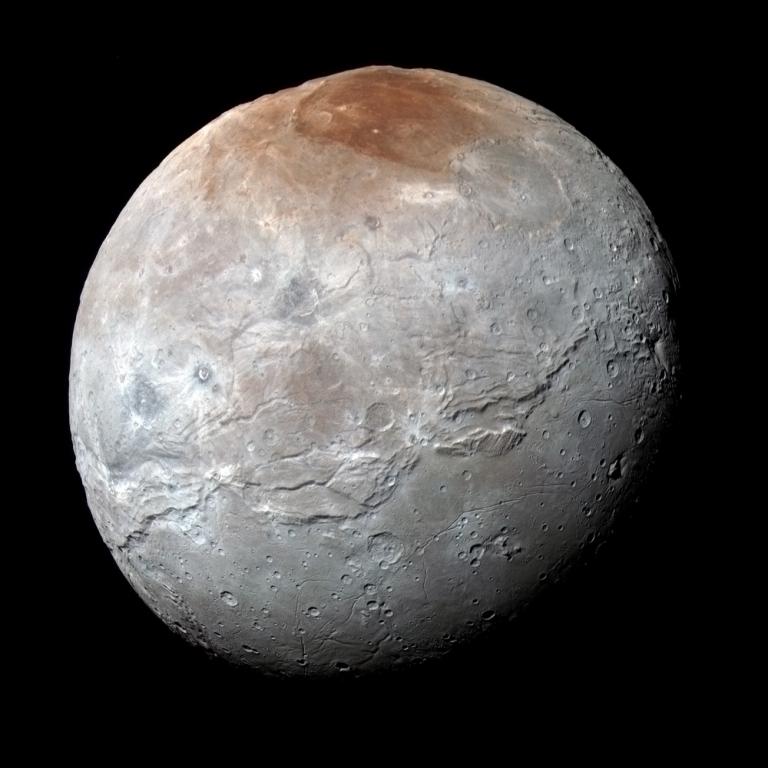
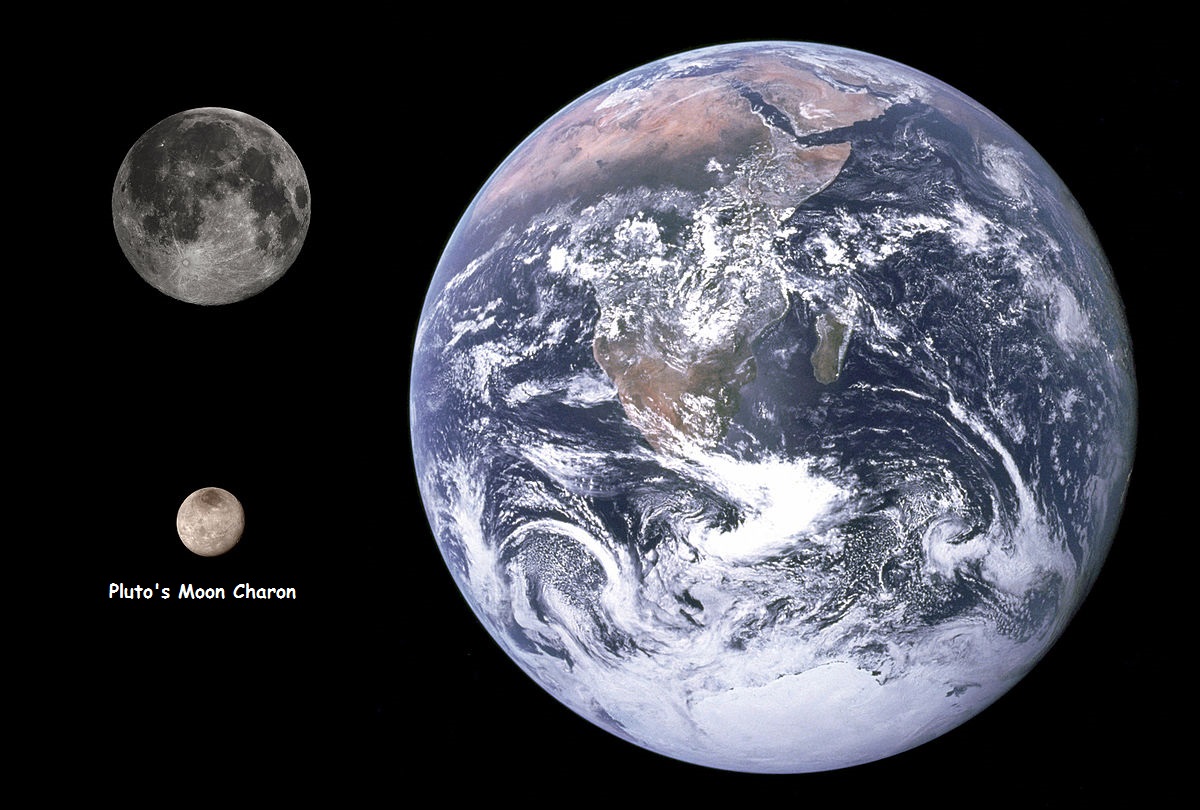
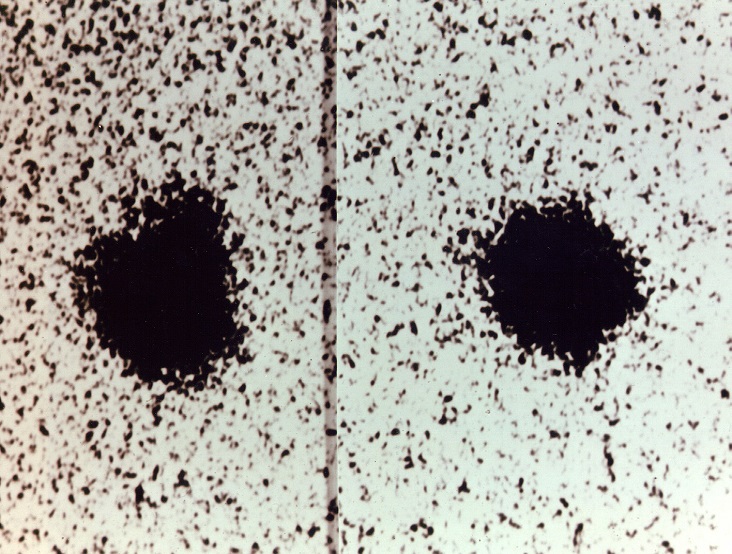
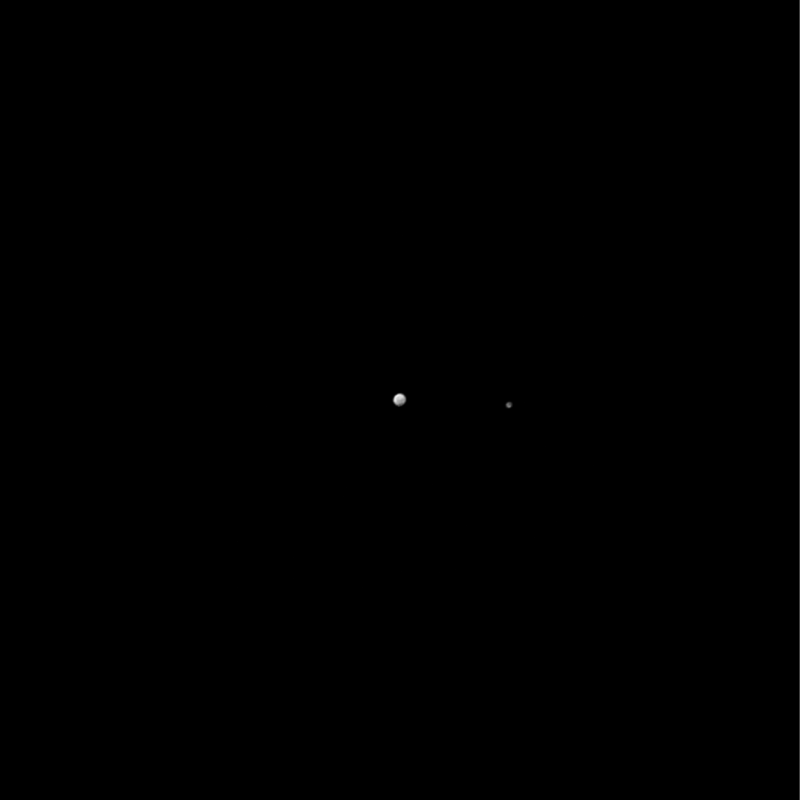
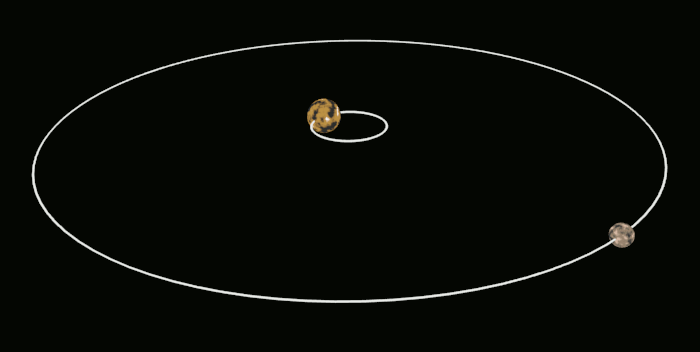
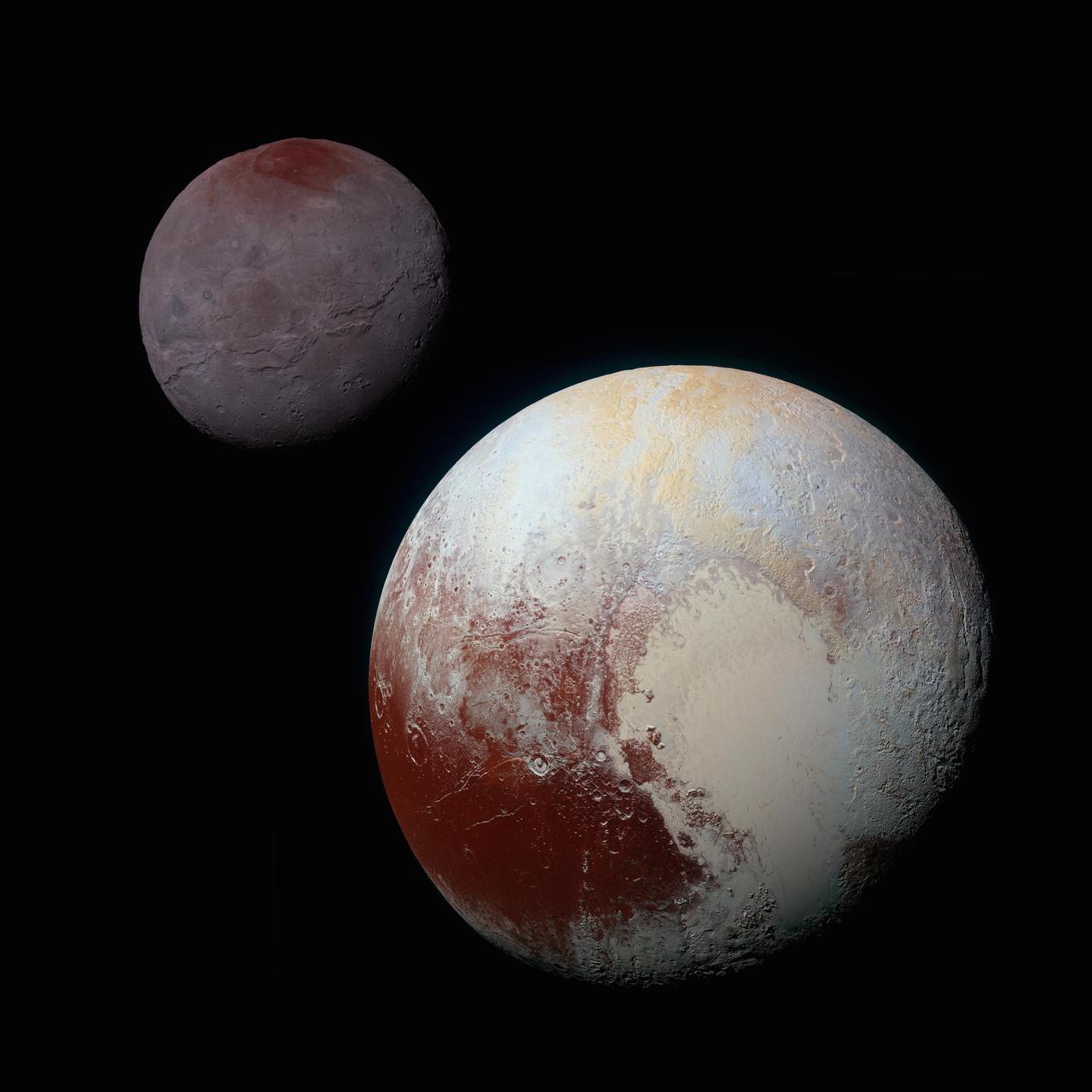
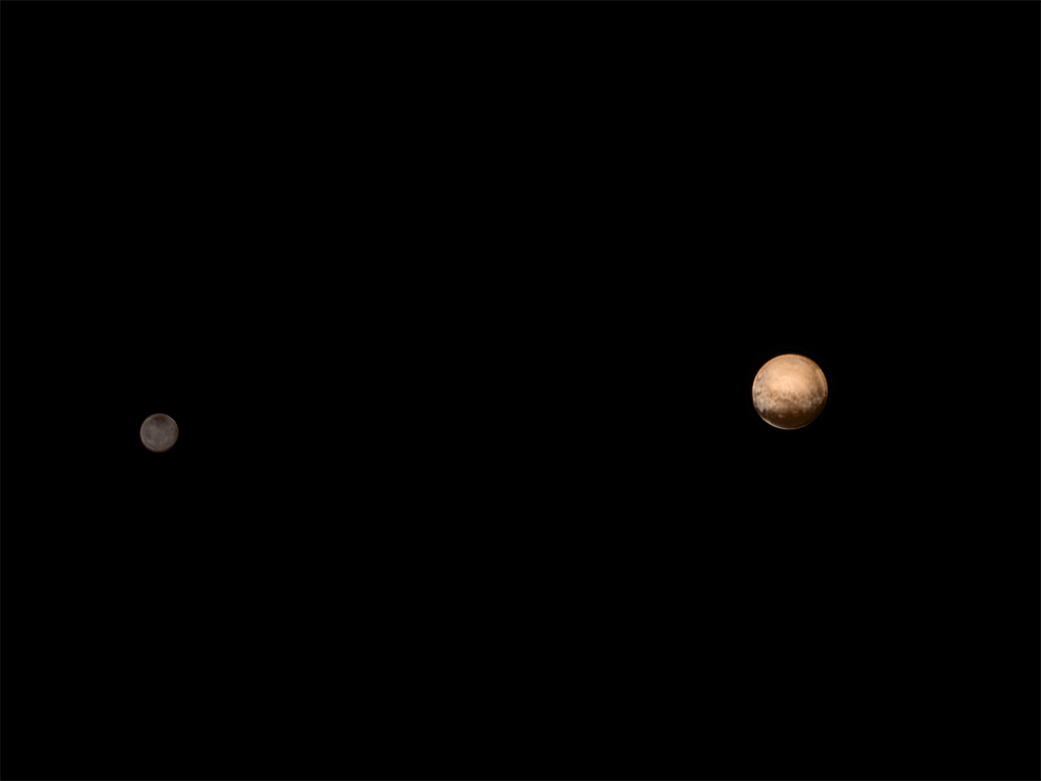
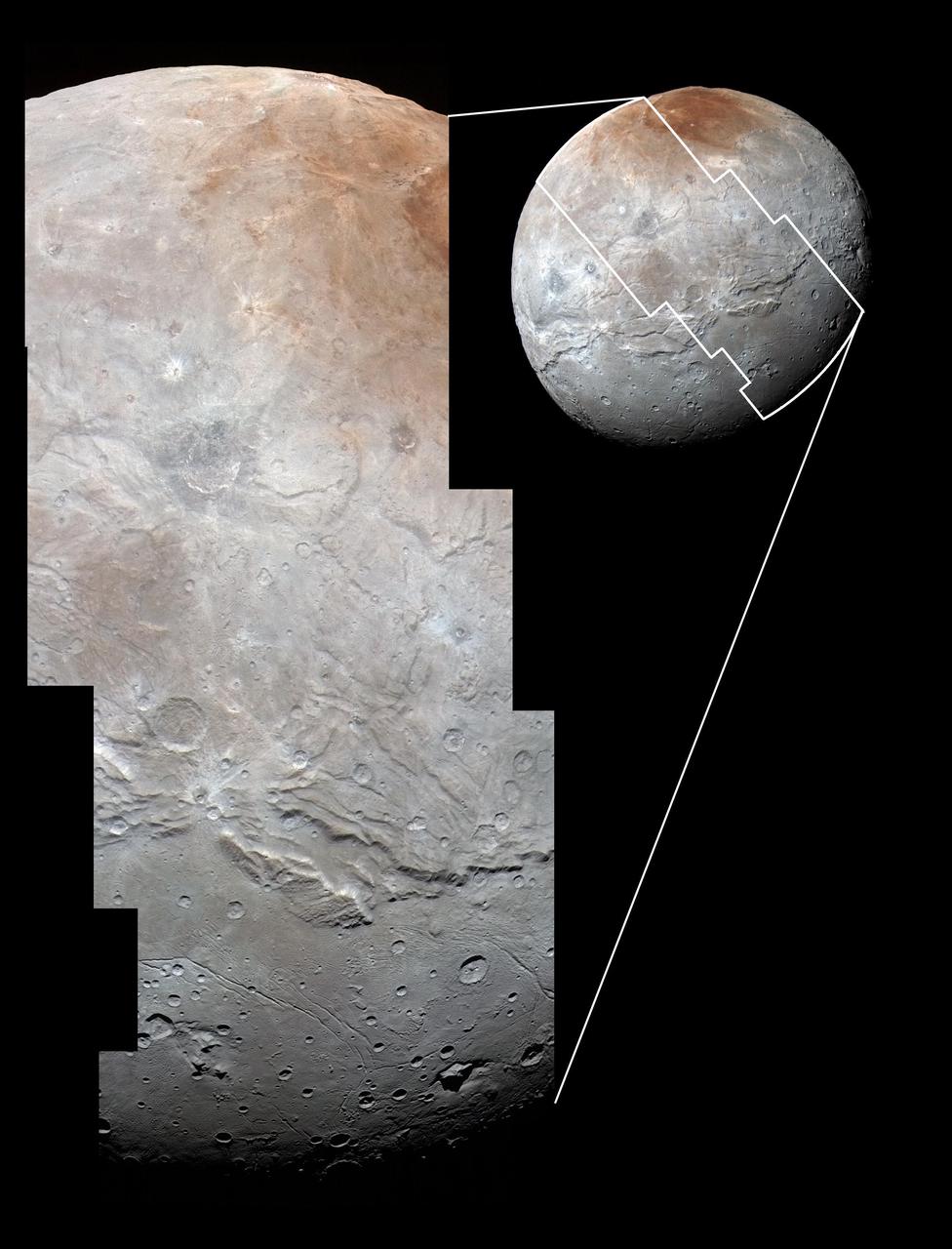
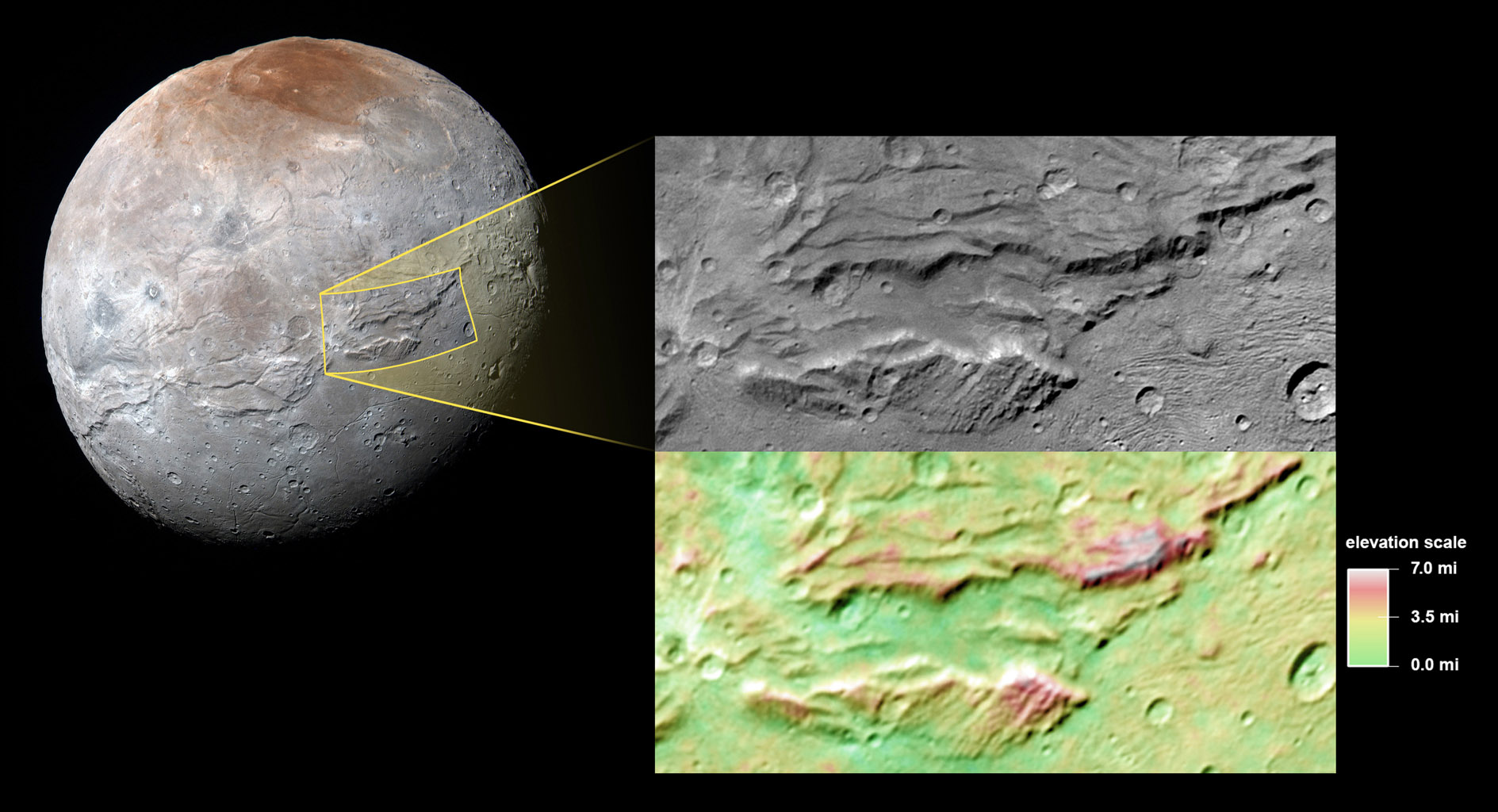
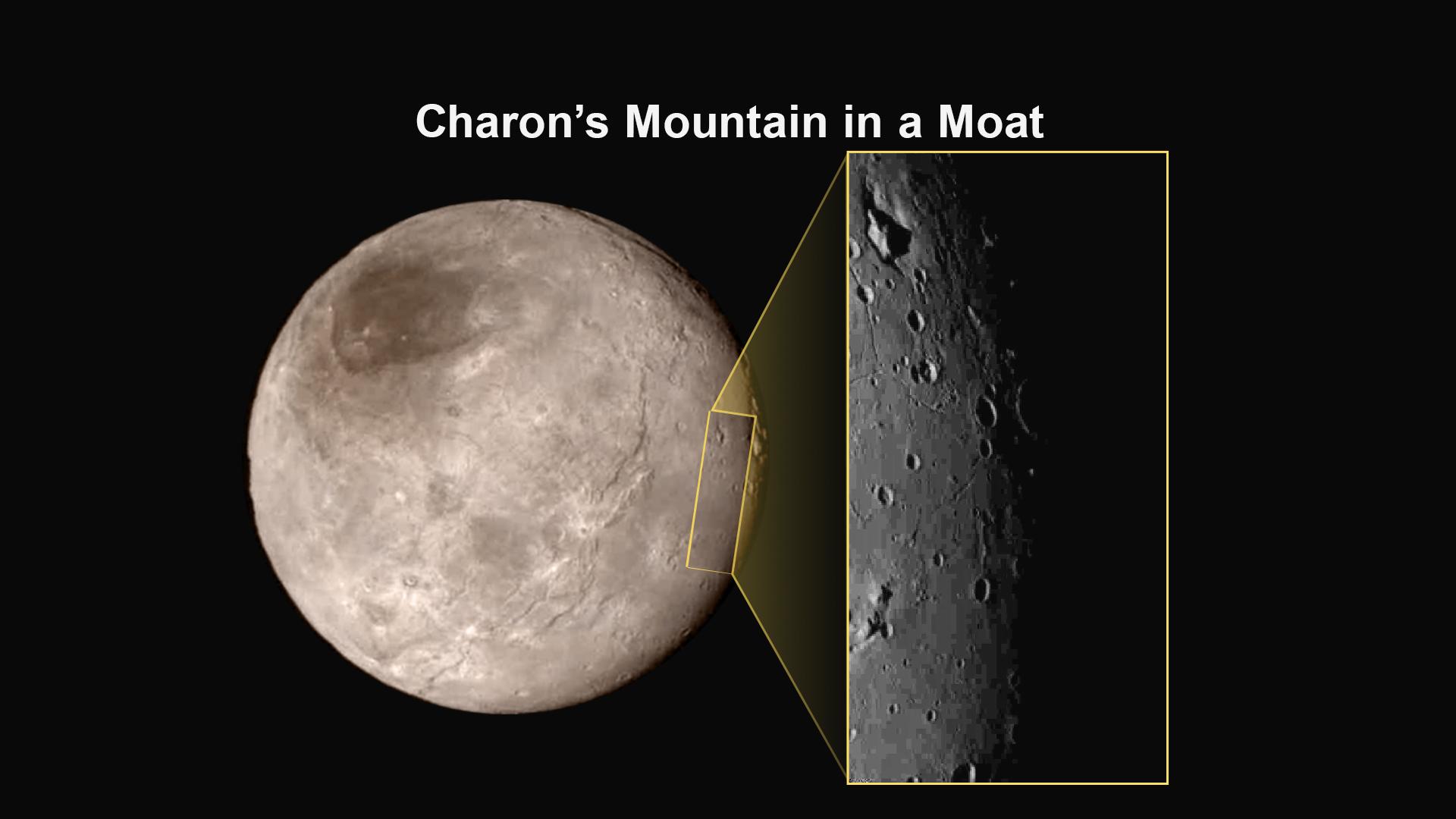
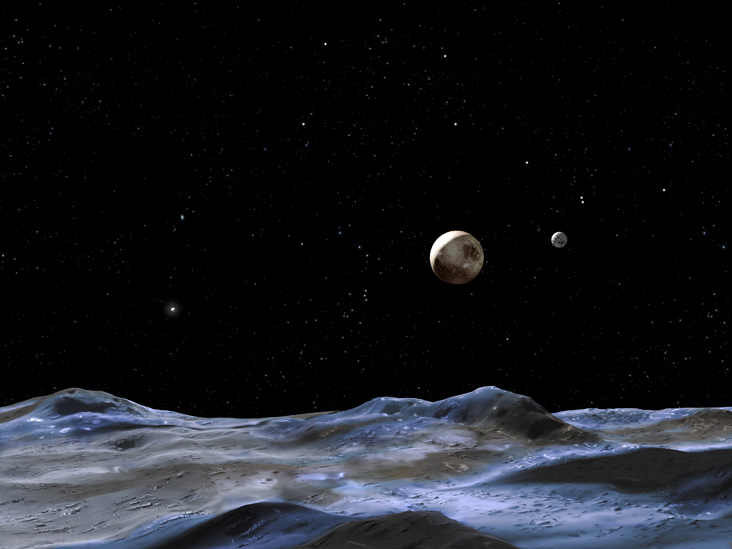
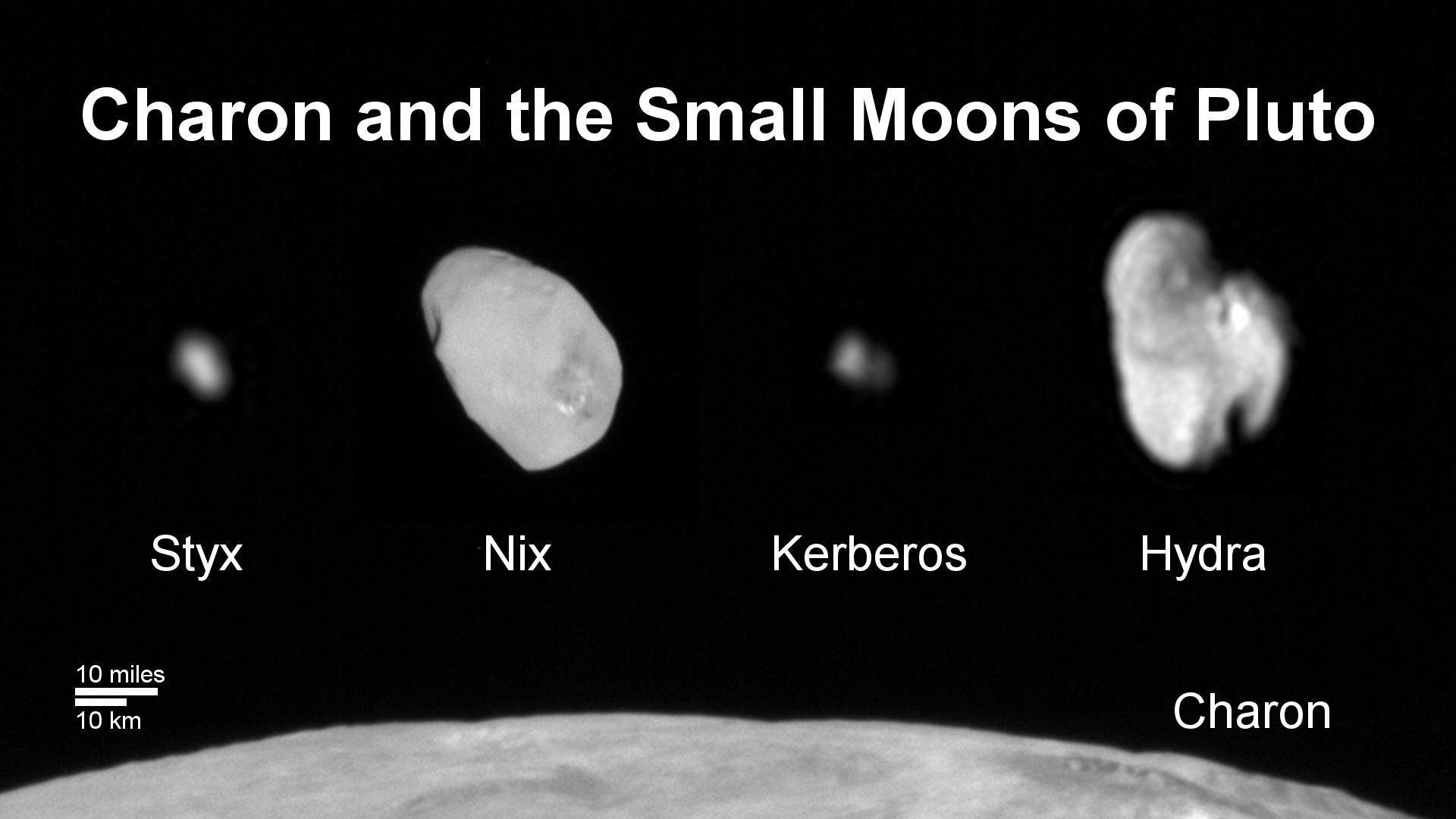
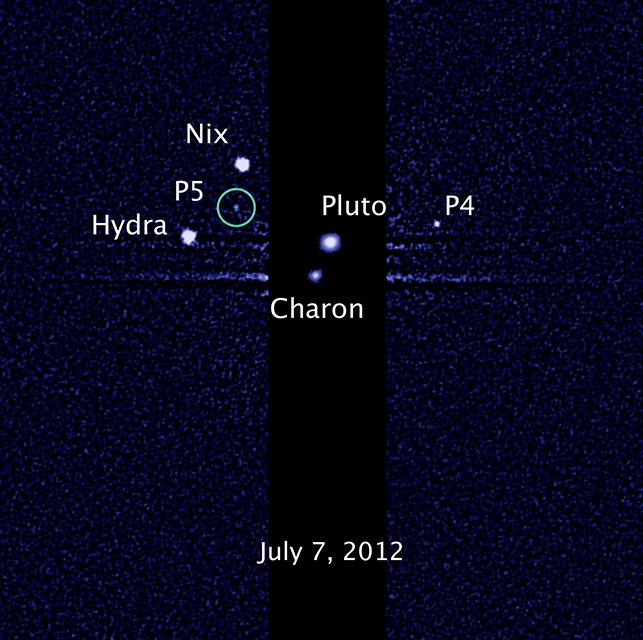
Charon
Pluto's Moon Charon Size Comparison
Charon Discovered
Tidally Locked
Charon's Orbit
Dual Dwarfs
Pluto and Charon
Charon Hi Resolution
Serenity Chasma
Charon Feature
Pluto And Charon
Charon Compared
Pluto Moon System















